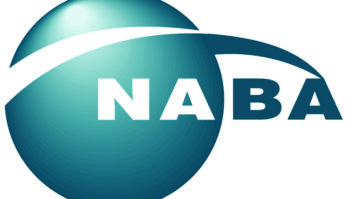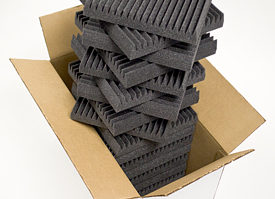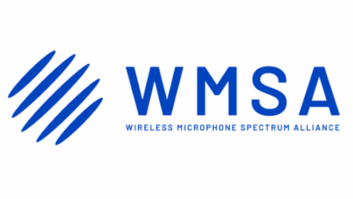Radio World’s “Guest Commentaries” section provides a platform for industry thought leaders and other readers to share their perspective on radio news, technological trends and more. If you’d like to contribute a commentary, or reply to an already published piece, send a submission to [email protected].
The author is the marketing and communications coordinator for the North American Broadcasters Association.
The North American Broadcasters Association (NABA) was founded decades ago on a simple but vital principle: Broadcasters needed to collaborate to solve common technical and operational challenges in the media landscape. In the intervening years, that landscape has drastically changed, from the growth of cable television, the rise of the internet and the introduction of streaming services and FAST channels.
While these services challenge the traditional broadcast model with new competition, in recent years a new threat has emerged to broadcasting’s core asset — spectrum. And the culprit? The miniature transmitter/receivers hundreds of millions of North Americans carry around in their pockets every day — cell phones.
The North American Spectrum Alliance (NASPA) was formed to protect broadcast spectrum from the insatiable needs of the mobile telephony industry. It is a non-profit project managed by NABA and includes not just broadcasters, but a variety of companies and industries that depend on spectrum to support broadcasting. These include the wireless microphone and camera industry, both equipment manufacturers and frequency coordinators.
It also includes businesses that rely on wireless production equipment, like live sports events and concerts, Broadway shows, event producers and traditional news gathering. Content distributors, including satellite operators and trucks are also involved.
In a landscape where spectrum demand is rising and new technologies compete for bandwidth, the North American Spectrum Alliance is filling an important role: To create a unified voice for users of all types of spectrum in media against further repurposing for the wireless industry.
The Alliance launched in January of this year, brought together under the leadership of Chair Brad Cheney (FOX Corporation) and Vice-Chair Henry Cohen (CP Communications). NASPA has quickly helped unify a broad and often fragmented group of stakeholders around common priorities: preserving operational reliability, protecting spectrum access and ensuring the long-term viability of content delivery infrastructure in North America.
Through Brad and Henry’s guidance, NASPA has emerged as a vehicle for unity and a key convener of cross-industry dialogue. In the months since its creation, the Spectrum Alliance has hosted webinars on new wireless mic technology, challenges to spectrum for wireless cameras and the status of PMSE (program making and special events) spectrum in Europe. The Alliance held its first in-person meeting during the NAB Show in Las Vegas, where the groundwork was laid for its first regulatory action: responding to the FCC’s C-band Notice of Inquiry.
Keeping The C-Band Together
In the world of spectrum management, the C-band spectrum is used to distribute content long distances over satellite, and is depended upon by live trucks in the field, satellite-fed distribution networks and breaking news that can’t wait. The FCC auctioned half of the C-band spectrum in 2021 and transitioned incumbent users into the remaining C-band a few years later. It now has raised the possibility of auctioning off the remaining portion of the band, which would leave broadcasters and related industries with inferior distribution modalities.
In comments on this proceeding, NASPA emphasized that there is no viable substitute for the unique reliability and reach that the C-band offers. Alternative solutions like fiber or Ku/Ka-band satellites simply cannot match C-Band’s resilience, particularly during severe weather events, or in remote areas.
NASPA’s comments also drew attention to the size of the ecosystem at risk — not just major broadcasters, but the thousands of small businesses, independent uplinkers and service providers who depend on this band to deliver events reliably. Moreover, NASPA’s comments made clear that any forced transition away from the Upper C-Band must include full reimbursement — not only for the cost of replacement equipment, but also for the increased operational burdens that alternative solutions could impose.
At a time when the media industry has already made enormous sacrifices during the previous C-band repack (giving up 60% of the band and increasing spectral efficiency by 250%), NASPA’s comments reflect the membership’s need for policymakers to recognize the full impact of any further loss to the C-band.
A Modern Approach to Temporary Authorities
In parallel, NASPA also submitted reply comments in the FCC’s “Delete Delete Delete” proceeding, which seeks to eliminate outdated rules and regulations that have no meaningful role in today’s regulatory environment. NASPA highlighted a similar and equally urgent spectrum access challenge: access on a temporary basis for occasional use during live events.
The media production and live event industries — multi-billion-dollar sectors that support hundreds of thousands of jobs — continue to rely on part-time spectrum use. Yet, the regulatory framework governing access to spectrum for critical devices like wireless microphones and headsets remains outdated and increasingly unsustainable.
NASPA’s comments called for the overall modernization of the FCC’s Special Temporary Authorization (STA) process, proposing a number of solutions: permanent licensing for guard bands already proven safe for microphone use; access to unused mobile spectrum blocks; and the removal of unnecessary burdens like the 50-device minimum for Part 74 licenses.
By recognizing the inherently low-power, non-interfering nature of professional wireless microphone operations, the FCC can modernize its rules, stabilize access to spectrum and ensure that American live productions remain best-in-class worldwide.
The decisions the FCC makes in the coming months will determine the fate of spectrum allocation in the United States — which will, in turn, have repercussions for the rest of the continent. NASPA remains committed to advocating for a future where innovation and operational excellence are not at odds, but instead move forward together.
By preserving essential spectrum resources like the Upper C-Band and modernizing outdated wireless microphone licensing, we can ensure that the next generation of media is as reliable, dynamic and as globally influential as ever.
[Related: “Wireless Microphone Alliance Pushes Forward With FCC Filings“]







